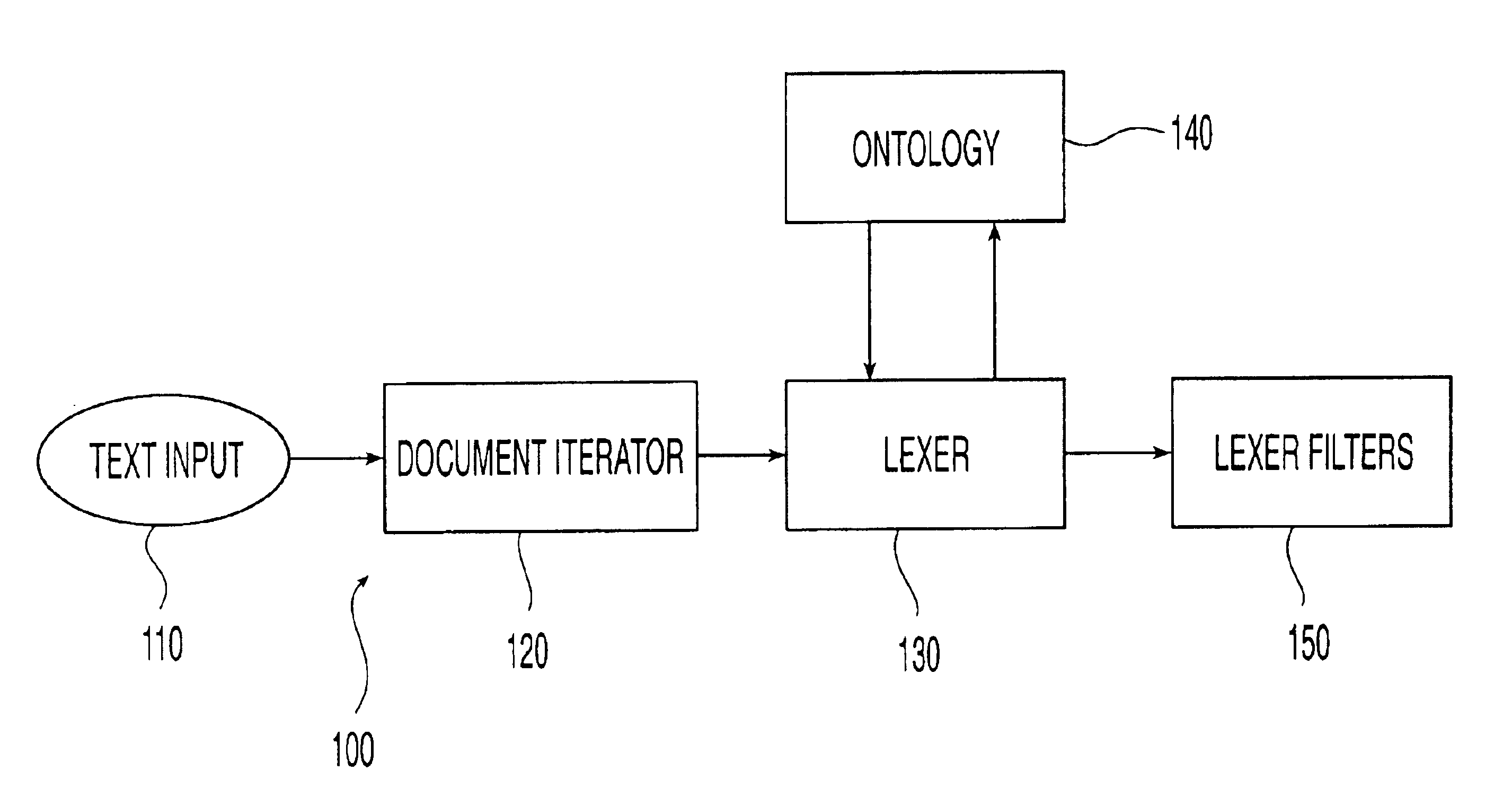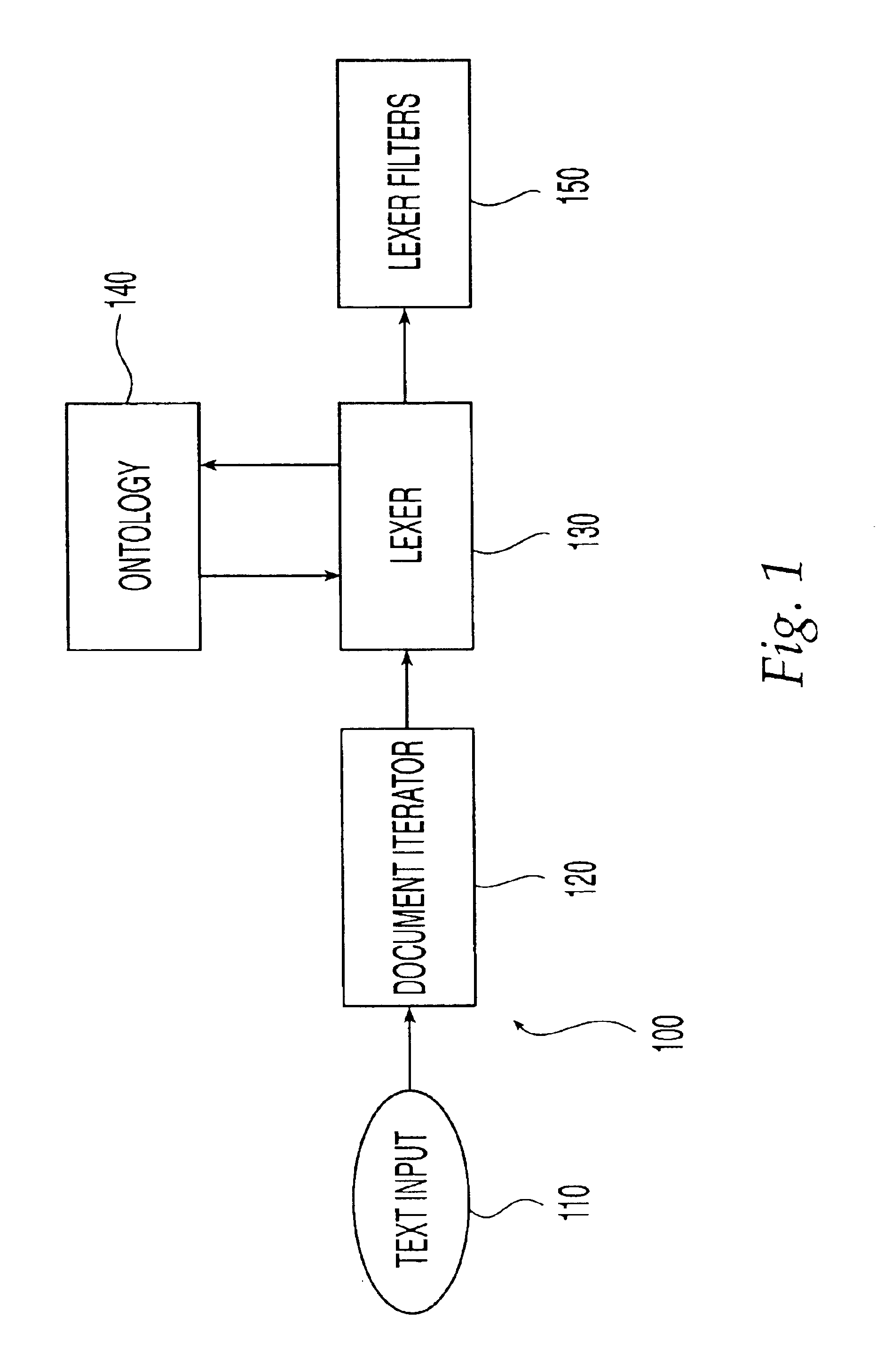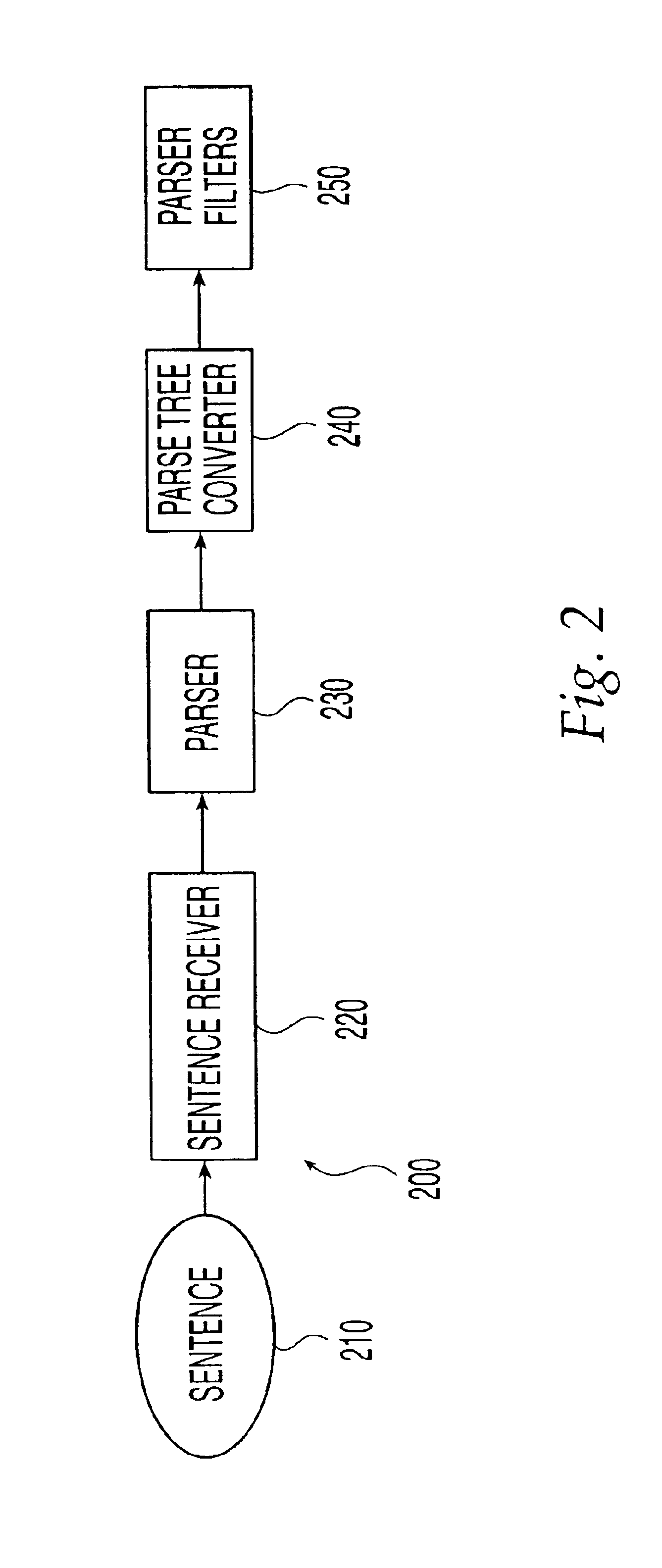Ontology-based parser for natural language processing
a natural language and parser technology, applied in the field of natural language parser, can solve the problems of inability to check for both syntactic and semantic compatibility, previous techniques do not have very robust feature checking capabilities, etc., and achieve the effect of enormous speed
- Summary
- Abstract
- Description
- Claims
- Application Information
AI Technical Summary
Benefits of technology
Problems solved by technology
Method used
Image
Examples
Embodiment Construction
[0044]In the following detailed discussion of the present invention, numerous terms, specific to the subject matter of a system and method for concept-based searching, are used. In order to provide complete understanding of the present invention, the meaning of these terms is set forth below as follows:
[0045]The term concept as used herein means an abstract formal representation of meaning, which corresponds to multiple generic or specific words in multiple languages. Concepts may represent the meanings of individual words or phrases, or the meanings of entire sentences. The term predicate means a concept that defines an n-ary relationship between other concepts. A predicate structure is a data type that includes a predicate and multiple additional concepts; as a grouping of concepts, it is itself a concept. An ontology is a hierarchically organized complex data structure that provides a context for the lexical meaning of concepts. An ontology may contain both individual concepts an...
PUM
 Login to View More
Login to View More Abstract
Description
Claims
Application Information
 Login to View More
Login to View More - R&D
- Intellectual Property
- Life Sciences
- Materials
- Tech Scout
- Unparalleled Data Quality
- Higher Quality Content
- 60% Fewer Hallucinations
Browse by: Latest US Patents, China's latest patents, Technical Efficacy Thesaurus, Application Domain, Technology Topic, Popular Technical Reports.
© 2025 PatSnap. All rights reserved.Legal|Privacy policy|Modern Slavery Act Transparency Statement|Sitemap|About US| Contact US: help@patsnap.com



